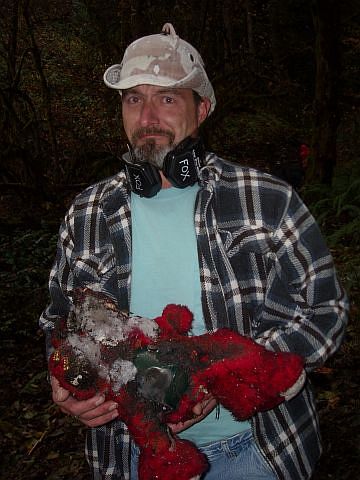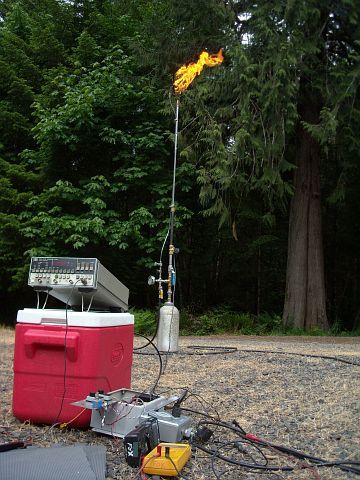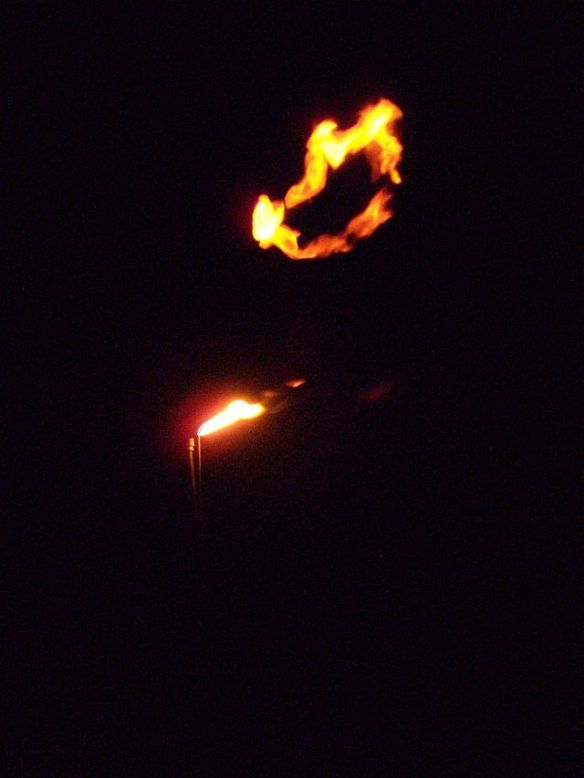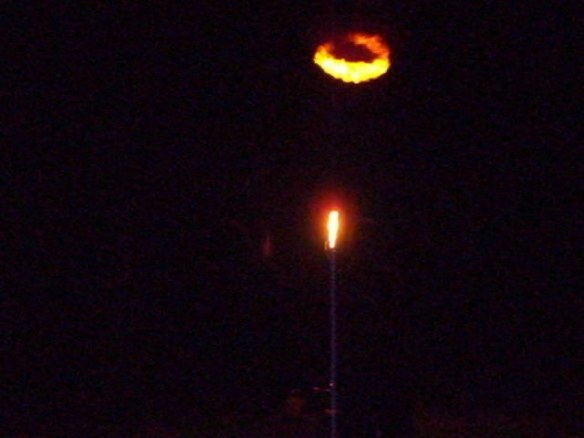I’m finally finished with all of my coursework for my Washington state pyrotechnician’s license! The last course, as far as I’m concerned, was the best of all. We spent a bit more than 2 hours setting up and loading racks of mortars and wiring them up for electrical firing. We spent less than 2 minutes firing them…
Electrical firing allows the operator a greater degree of control over the timing of launch of the shells which can give a show a nicely polished appearance. It also makes timing the show to music a bit easier. Lastly, it is quite a bit safer than hand firing shells due to the removal of personnel from the mortar racks.
Ematches are used instead of fusees (road flares) to ignite the fuses of the shells. An ematch is simply a wire bridge, a low resistance, small diameter wire that heats upon applying electrical current. The bridge is at one end of a small gauge pair of wires while the other end has stripped ends that are shunted, twisted, together to reduce the possibility of inadvertent ignition. The bridge is coated with a mixture of flammable compounds that burn insanely hot when given the juice.
The firing slat runs alongside the mortars. This one has 50 individual pairs of connectors allowing 50 cues (single or multiply connected items) to be fired from the board in any desired order.
Espressodude is a good friend of mine and is the one who nudged me into earning my Oregon and Washington licenses. We camp together at Burning Man and build propane flame effects together at home in the Portland area. He is a crew member with Black Rock FX, an awesome group of highly skilled and dedicated pyrotechnicians who coordinate, install, and fire many fireworks and effects displays at Burning Man. They did the Flaming Lotus Girls Tympani Lambada as well as The Trojan Horse shows last year. If everything goes right and I get the nod, I will be on the crew this year in some capacity…
Smaller candles are typically not used in big shows. Smaller shows like high school games and grand openings and the like will use them quite a bit due to their low cost.
Pepper is one of almost ten folks at the display company (where we trained / launched at) who have switched from tobacco to personal vaporizers (e-cigarettes).
The firing board shown here will set you back around $4,000. They’re well made and will stand up to a shitload of abuse (within reason…). Each point, when touched with the stylus, the black test probe, will fire whatever is hooked up to the corresponding point on the slats. The slats connect to the 50-pair connectors at the upper right. The board is powered by the sealed lead-acid 12 volt battery shown atop the board. It is connected to the board by the terminals at the top left corner. To the right of the terminals is a switch that selects between test and fire. In the test position it restricts the outgoing current to a few milliamps in order to check the continuity of each circuit. If the cue is ok, you’ll see a light illuminate as well as hear a tone from the speaker. Although we check each cue before connecting it to the slat terminals, something can always go wrong. Test twice, fire once. There’s no do overs during the show…
I need four more live shoots, two letters of recommendation, and the passage of a state exam to obtain my Washington state license. Two more live shoots and passing a state exam will net me my Oregon license. Because I love certifications and licenses (locksmith, gunsmith, heavy equipment operator, alarm and security installer, etc.), I’ll probably go for my Idaho license as well.
Fireworks display companies are always looking for people to help on their shows. Think about it. Most folks spend their Fourth of July eating brats (or chasing them) and passively watching fireworks shows. Then there’s us pyros. We’d rather let someone buy tens of thousands of dollars worth of fireworks for us to fondle, er, handle, load, and fire. Unless you’re the lead pyro you won’t be making much. You’ll do well to cover your gas and get a lunch or dinner out of it. Money isn’t the point of it though. The opportunity to work with like minded individuals and the chance to entertain a crowd with the harnessed power of a thousand year old art form, that right there is payment enough for me.
Remember, fireworks aren’t just for the 4th. New Years Eve, Christmas, weddings, parties, funerals, grand openings, and movies are but a few other events that make use of splodey goodness.
Google your area or state for fireworks display companies and give them a call. Most will be glad to train you or tell you where you can obtain training. Most states don’t require licensing to fire shows. Of course, if you don’t have a license, you can’t lead a crew on a shoot. If earning some extra money is one of your goals, get your license, put some time in as a crew member, get to know the operators, build a reputation as a safety conscious and hard working individual, and you’ll be able to lead your own crew.




















































